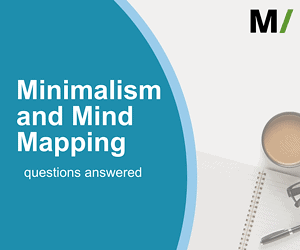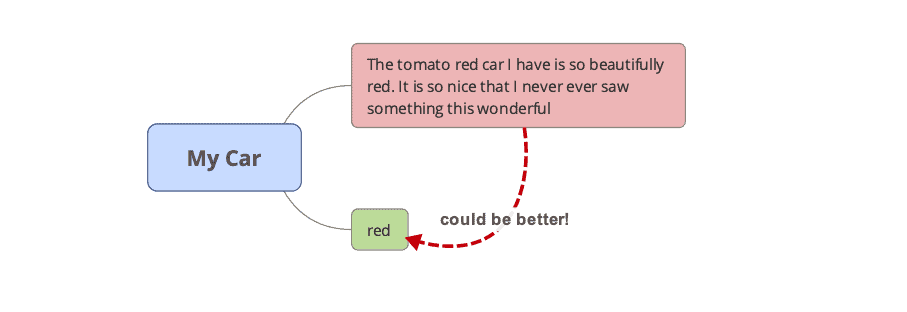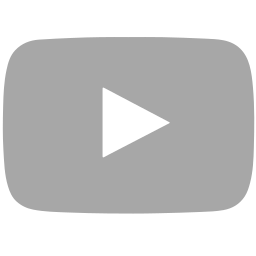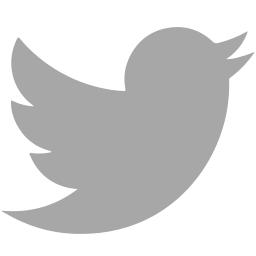When you use mind maps, you probably like to combine minimalism and mind mapping.
Let’s explore how minimalism can be a wonderful asset to your mind maps and studying.

(This is an introduction into this interesting topic of minimalism and mind mapping. Want to learn more? Let me know)
A definition of minimalism is:
A style or technique (as in music, literature, or design) that is characterized by extreme spareness and simplicity.
Minimalism is a field that has been getting more and more attention these last years. Of course, there are the Minimalists who talk about this topic in great detail. It is also good to mention Marie Kondo. She is not really a minimalist, but more a person who talks about finding the joy in the things you own. For her, this implies that the things that don’t spark joy should be removed from your home and life.
There is Cal Newport who wrote about Digital Minimalism. He talks about reducing your social media time. Also, you should focus on a select number of activities when you are online.
Mr Newport, the Minimalists, and Mrs. Kondo understand that noise in your life costs you dearly. This could be a financial cost. It could also be the cost of attention, loss of time, and a loss in health.
In short, noise creates a distraction. Remove the noise and you gain focus and clarity.
Time for a Good look at yourself
Growth can occur when you dare to change. Change things about yourself, your habits, your systems, and your environment.
The present is always the best time for you to change. What this means is that you should have a good look at yourself. Understand what you do during the day. Figure out what you benefit from. Also, understand what the noise in your life is. Think about:
Stop Wasting time watching a stream on TikTok, Youtube, Netflix, Prime, etc
I know the first clip you watched was important to you. You wanted to learn something, but hey.. video 2 through 50 aren’t that useful…
Learn things on Netflix, Prime, etc. You can watch another tv-show. The problem is that it is a form of procrastination, not a real investment of your time. It might be better to focus and learn something watching a documentary.
HINT: You can of course always tell yourself to watch only during the weekend.
Limit all social media and email
Figure out how much time you waste on social media and on email… Probably too much!
That is why I recommend you use 20 or so minutes at the beginning of the day and at the end of the day for this. In this 20-minute time slot, you have to take care of all your email and social media accounts.
Limit the number of mind maps and documents you have
It is easy to over-do the number of mind maps you have. Before you know it, you created 2 or 3 mind maps or one chapter. Imagine you have 20 chapters in your book. The combined summary of that book maybe 20 maps long!
Earlier I wrote about using a master mind map to create an overview in a large number of maps. You can use this to minimize your number of maps.
Make sure you update the maps. This way you keep them nice and clean. But also you don’t have to create mind maps all the time…
HINT: Have a look at the book from Cal Newport on Digital Minimalism. You can learn a lot from his way of working.
HINT: Do a 30-day Digital Minimalism challenge. Stay away from social media, or limit it to max 30 minutes per day.
Now that we covered some digital issues, it is time to move our attention to the ‘real’ world.
Minimize the number of physical and emotional objects around you
To work or study more efficiently you probably have to limit the noise around you as well. That is if you don’t have a super-strong way to focus on your task…
I like to limit the noise around me. I work best when there are few people around me. I really like to sit at my clutter-free desk. This means I normally only have a laptop in front of me. I also have my headphones to limit outside noise.
When you try to focus and you constantly hear things around you or have distracting objects near you… focus flies out of the window.
As Thoreau said… the value of something is the amount of life I have to exchange to get it.
HINT: Find more joy in the things you own (and remove noise). Have a look at the website of Marie Kondo.
Let’s move on to minimalism and mind mapping…
Minimalism and Mind Maps
A mind map does not have to be nearly empty when you start applying minimalism to it.
I firmly believe a mind map should contain enough information. Not too much, but certainly not too little.
This probably sounds very vague. I understand. Let me explain
I often receive mind maps from people new to mind mapping that have too much information. They don’t use one or two words per node. The map has paragraphs per node, like this:

This doesn’t work, so I changed the top branch in the example to the bottom one.
Compare it with driving a fancy sports wagon. You want to enjoy the speed. You want to drive smoothly along the road.
Now take that nice car. Put a few crying kids in the back seat. Fill the trunk with heavy luggage. Add a couple of bikes on the roof. Perhaps take your trailer filled with sheep with you.
How is the ride going to be for you this way?
Probably not that nice!!!
Make sure you get rid of the noise if your goal is to enjoy a smooth ride. If on the other hand, you want to bring all that stuff with you because you have a different goal… go ahead!
The same applies to mind mapping. What is your goal with the map? When you are looking for clear and noise-free information, remove the clutter!
Be really adamant about this. You are studying and you want to move forward. You want to understand the book. You want to apply what you learn. You don’t need all this noise!
THIS IS IMPORTANT: Make sure you create one map on a certain topic. Next time you study that topic, don’t create a new map. Add your information to an existing map. Remove information that is already clear or that you understand. This removes clutter and noise.
HINT: The removal of information is easier when you use mind mapping software. The mind map software allows you to update your mindmaps, the central idea, and the keywords easily.
You end up with a simple mind map that does what it needs to do: help you study faster and more efficiently.
Your Next Mind Map
Become a mind mapping minimalist!
Add enough information to the map to make it clear for you. Other people don’t need your map to study. You create the map for yourself. Open up your mind map tool, create a map, and add your keywords. Of course, you can use a mind map template.
Combine this minimalist mind map with the master mind map concept. Also, remove environmental clutter. When you do that, you are well on your way to creating a noise-free learning experience.
Remove the clutter in your map as much as possible. This may take some time, but the benefits are well worth the small investment.
And you know what… by investigating what you can remove, you can learn a lot as well. This is because you put real thought into analyzing your map content!
Enjoy your next mind map!


